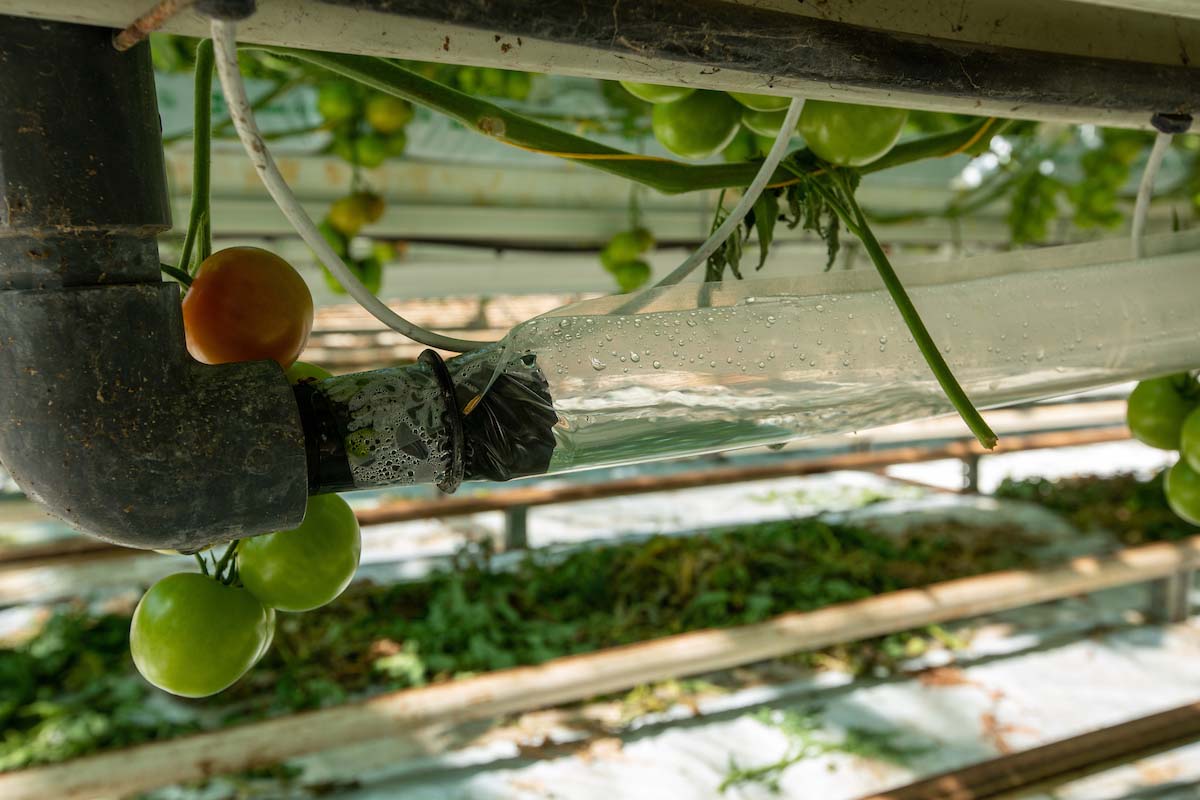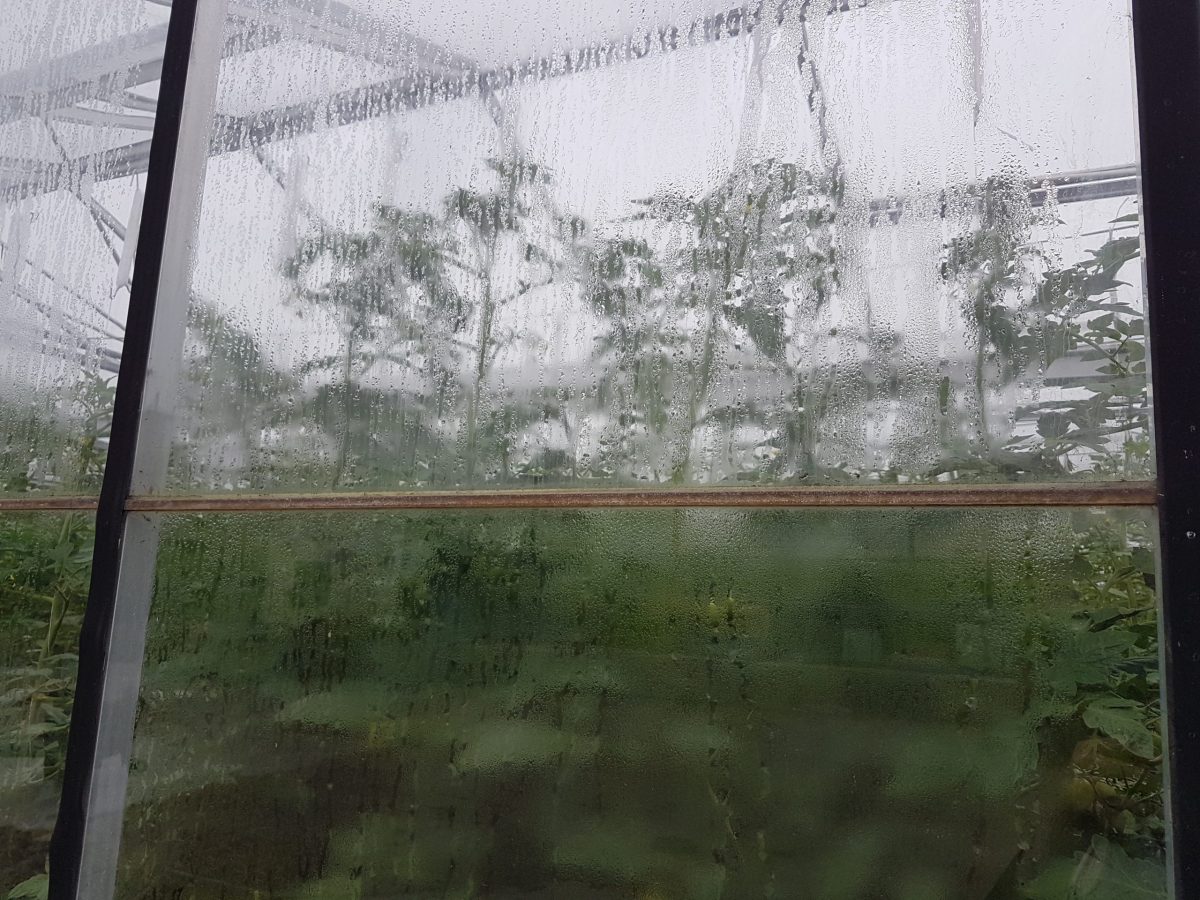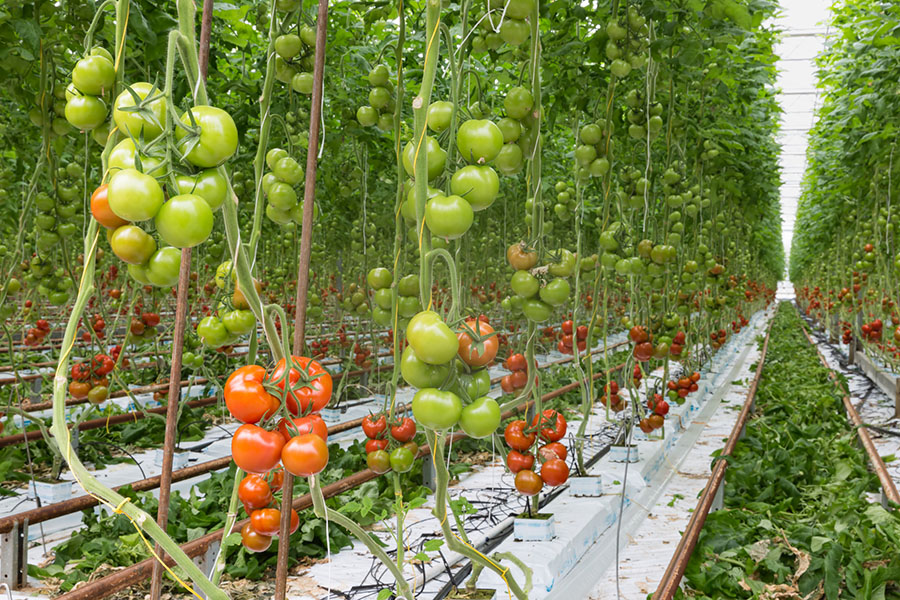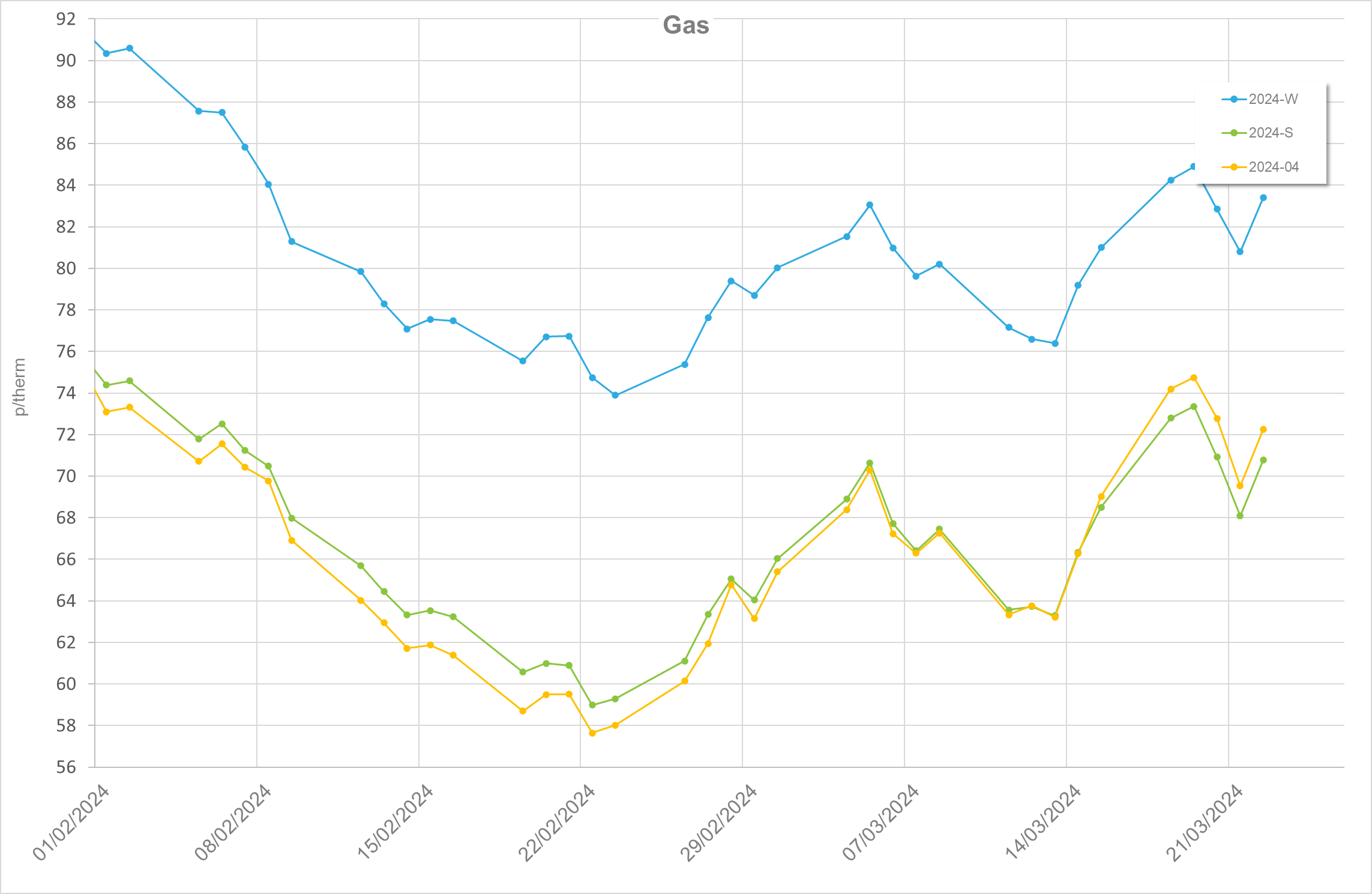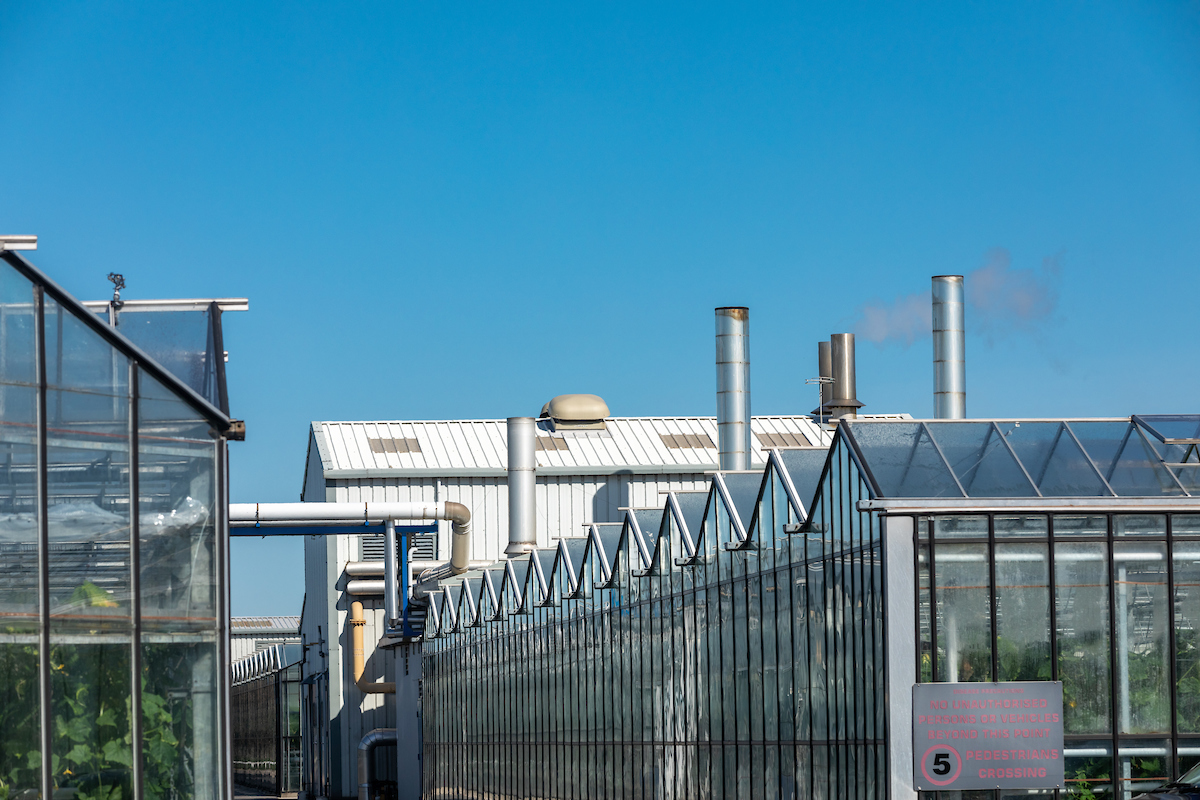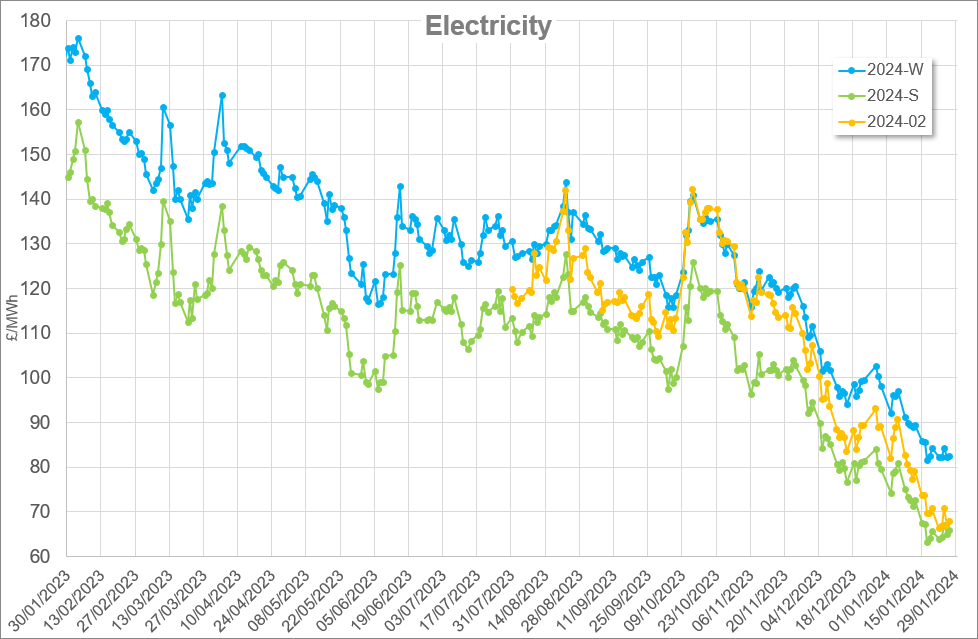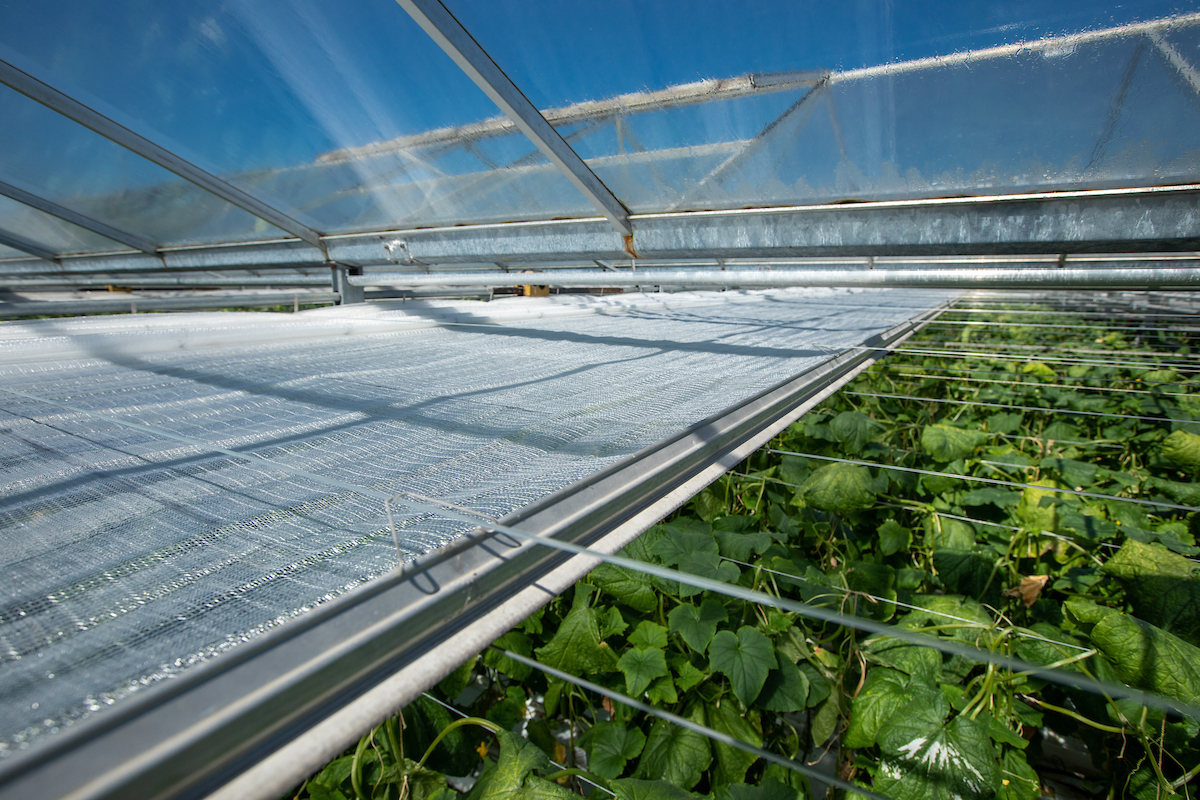First published: August 2013
Learn how to ensure humidity influences and ventilation settings don’t lower the effectiveness of your minimum pipe temperature strategy.
Quick links:
- The importance of ventilation settings
- Minimum pipe settings in practice
- How to resolve ventilation problems
- Minimum pipe heat: what does it cost?
The importance of ventilation settings
Reducing minimum pipe temperature settings is a good way to save energy. However, this must be done alongside well considered ventilation settings to ensure that heating requirements are minimised.
This example shows what happened at one of our Focus Nurseries where humidity influences and minimum ventilation settings were reducing the effect of a good minimum pipe temperature strategy.
Minimum pipe settings in practice
What can go wrong with an apparent good energy saving strategy?
In an attempt to save energy, Red Roofs Nursery has been using a minimum pipe temperature setting of 35oC which reduces when solar radiation increases. This setting remains unaffected by relative humidity changes.
At first glance this looks like a good energy saving strategy; however a closer examination of the climate graphs shows that things might not be quite as good as we think.
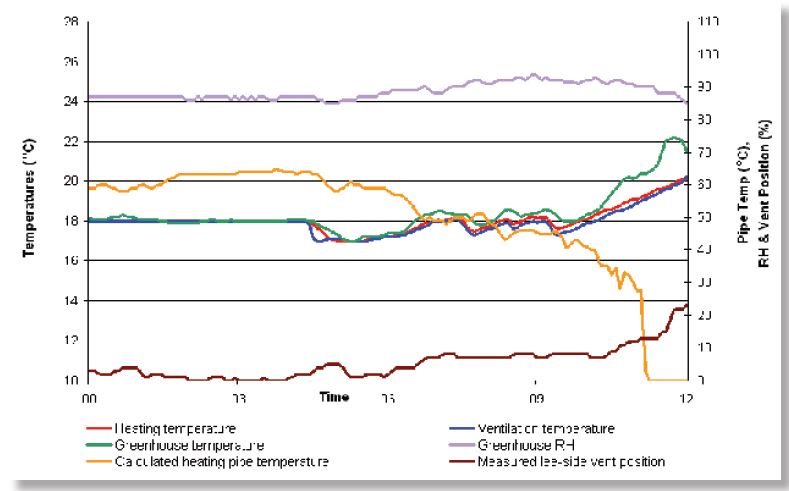
Why did this happen?
Humidity influences were being used which caused the heating and ventilation operational temperatures to converge when the relative humidity was increased.
As such, the minimum pipe temperature setting was effectively overridden and had no bearing on the heating inputs or ventilator positions. As a consequence heating was being applied at the same time as the vents were open.
What did it cost?
Running an extra 25oC of pipe temperature for 7 hours in a 1 Ha greenhouse led to the extra consumption of 7,650kWh of gas.
Even with gas prices at around 1p/kWh (assuming day-ahead buying), this still represents £76.50/Ha/night! Note: prices as at April 2009.
How to resolve ventilation problems
A look at specific ventilation strategies and settings.
- Ventilation temperature setting – make sure that the ventilation temperature is always at least 0.2oC above the heating temperature. This setting should be maintained all the time, even if the relative humidity is high.
- Minimum ventilation settings – use these sparingly and reduce the amount of ventilation when it is cold outside.
Suggested settings are:
| Relative Humidity (%) | Minimum Vent (%) |
| 85 | 0 |
| 90 | 2 |
Or, if you are controlling humidity based on humidity deficit (HD):
| Humidity Deficit (g/m3) | Minimum Vent (%) |
| 2.7 | 0 |
| 2.3 | 2 |
Also use outside temperature influence on the minimum ventilation so that the opening reduces by half (i.e. a maximum opening of 1%) as the outside temperature falls from 12oC to 8oC.
Minimum pipe heat: what does it cost?
You might also like to read the article, Minimum pipe heat: what does it cost? – we take a look at some simple relationships between heating pipe temperature, kWh of energy used and ultimately cost.

